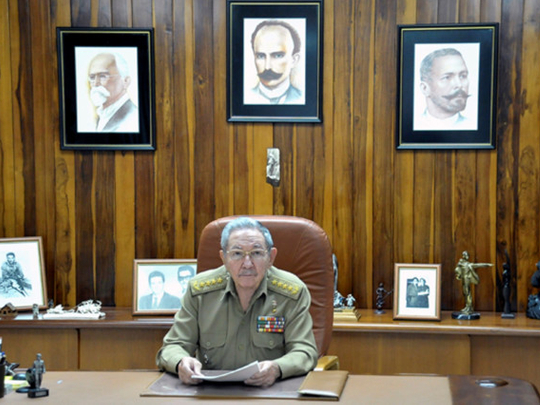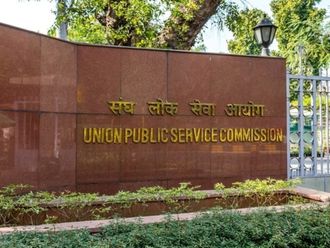
It is a Cold War stand-off that for decades has suited the leaders of both countries. In Havana, the American trade embargo has provided an easy excuse for the failings of its moribund communist economy and propaganda fodder for long-time dictator Fidel Castro. And in Washington, the refusal to deal with a regime headed by Castro or his younger brother, Raul, the current President, has been viewed as an article of faith by politicians in thrall to the powerful Cuban exile community.
There have been gradual changes of attitude but not policy in recent years. US President Barack Obama came to power insisting that he would re-shape America’s relations with long-standing foes, at a time when the strength of the Cuban lobby was somewhat waning. And Raul Castro and some younger allies seemed to realise that Cuba’s state socialist economic model was unsustainable, launching some market reforms even as they cracked down on political dissent. Yet, there was little apparent movement in mending the diplomatic rift dating back more than 50 years to Castro’s seizure of power and the Cuban missile crisis.
Stranded as a pawn in the middle for the past five years was Alan Gross, an American contractor jailed for espionage in Havana. For Cuba, there was the cause celebre of the so-called “Cuban Five”, intelligence agents jailed in Florida for conspiracy to commit espionage and murder. But for the past 18 months, secret talks about a prisoner release were under way, brokered by the Vatican after Pope Francis spoke privately to both presidents about improving relations.
Havana wanted to conduct a spy swap, but Washington insisted that Gross was not an agent and was also burned by the domestic blow-back after Sergeant Bowe Bergdahl, a prisoner in Afghanistan, was freed in return for the release of five Taliban leaders in Guantanamo Bay. But Havana was also holding an undisputed American spy, a Cuban jailed for nearly two decades for working for the US. In back-channel meetings in Canada, senior US and Cuban officials discussed a deal involving the release of all these prisoners, however they were designated.
And as the talks progressed, it became clear that a bigger deal might be within their grasp. The backdrop to Cuba’s embrace of diplomatic ties with the old “Yanqui” enemy owes much to the unravelling of the economy across the Caribbean in Venezuela.
For several years, Cuba’s economy has been kept afloat by 80,000 barrels of oil a day from Caracas under a deal set up by Hugo Chavez, Venezuela’s former socialist supremo and a protege of Fidel Castro. But with oil prices plummeting and Venezuela’s economy in a freefall, it was unclear how long that economic lifeline could last. The older Castro would never have countenanced a rapprochement, but his more pragmatic brother reluctantly conceded that he would have to talk to the regional superpower for economic survival, despite the risks that poses to his political power.
For Obama, the focus in his last two years in the White House will increasingly turn to his legacy on the international stage. The re-establishment of diplomatic ties with Cuba is part of that approach. But while he may consider the trade embargo a failed relic of a previous era, he will need the approval of the Republican-led Congress to lift it.
And given the scathing criticism of prominent Republicans for even the limited thaw, there seems little immediate prospect of that cooperation. While Obama will not be running for office again, his Cuba deal is certain to play a key role for those hoping to succeed him in 2016.
— The Telegraph Group Limited, London, 2014








